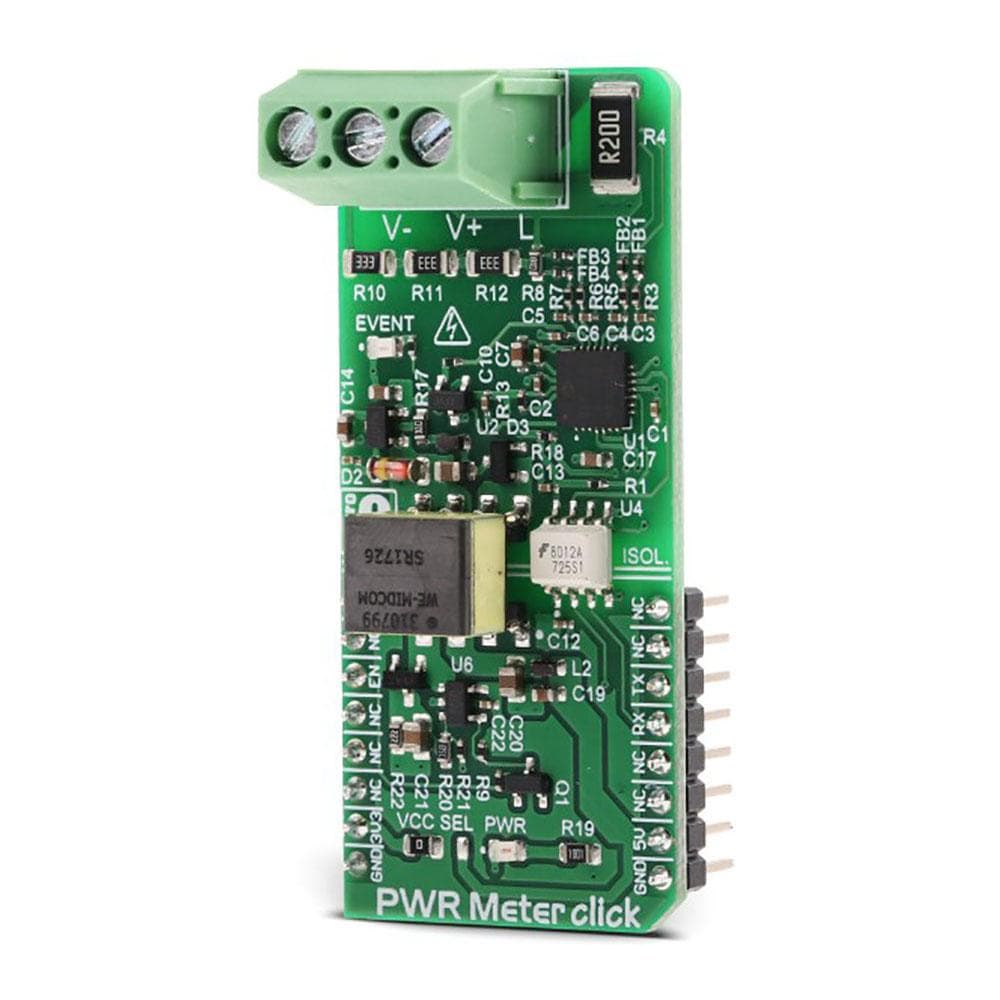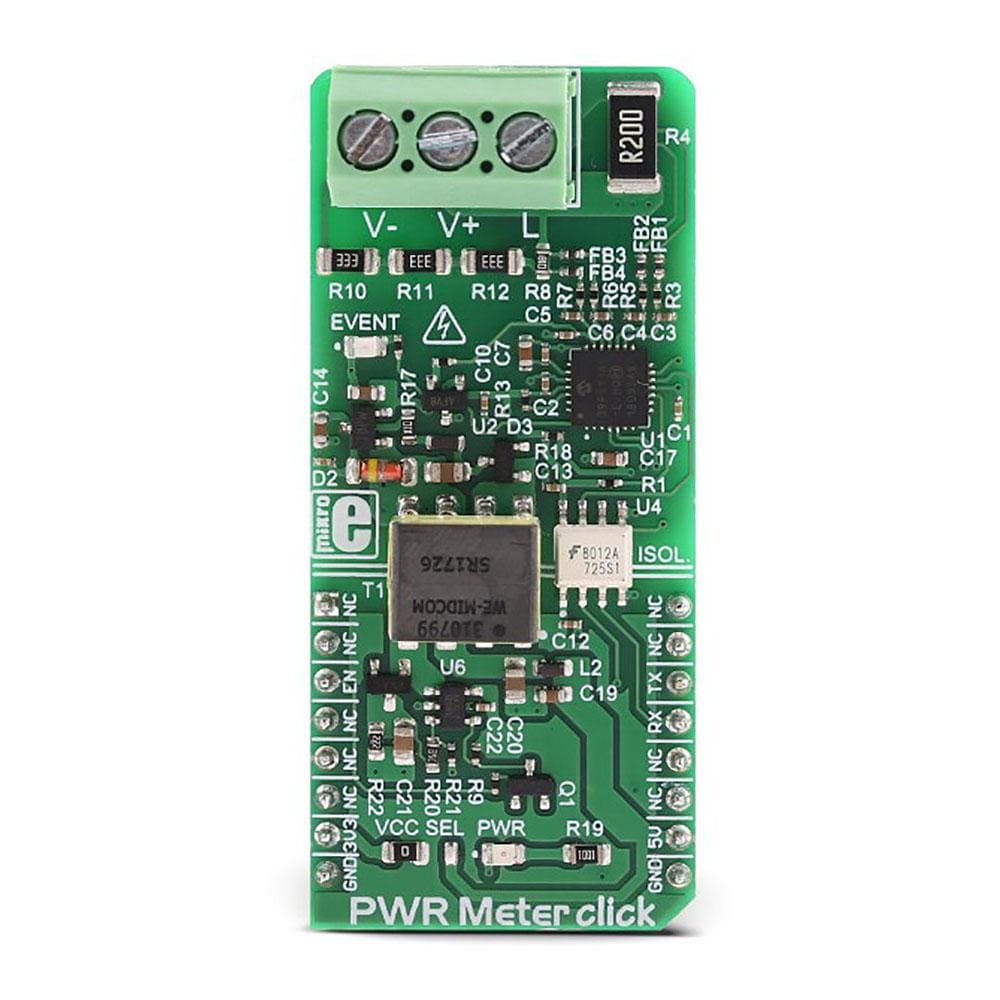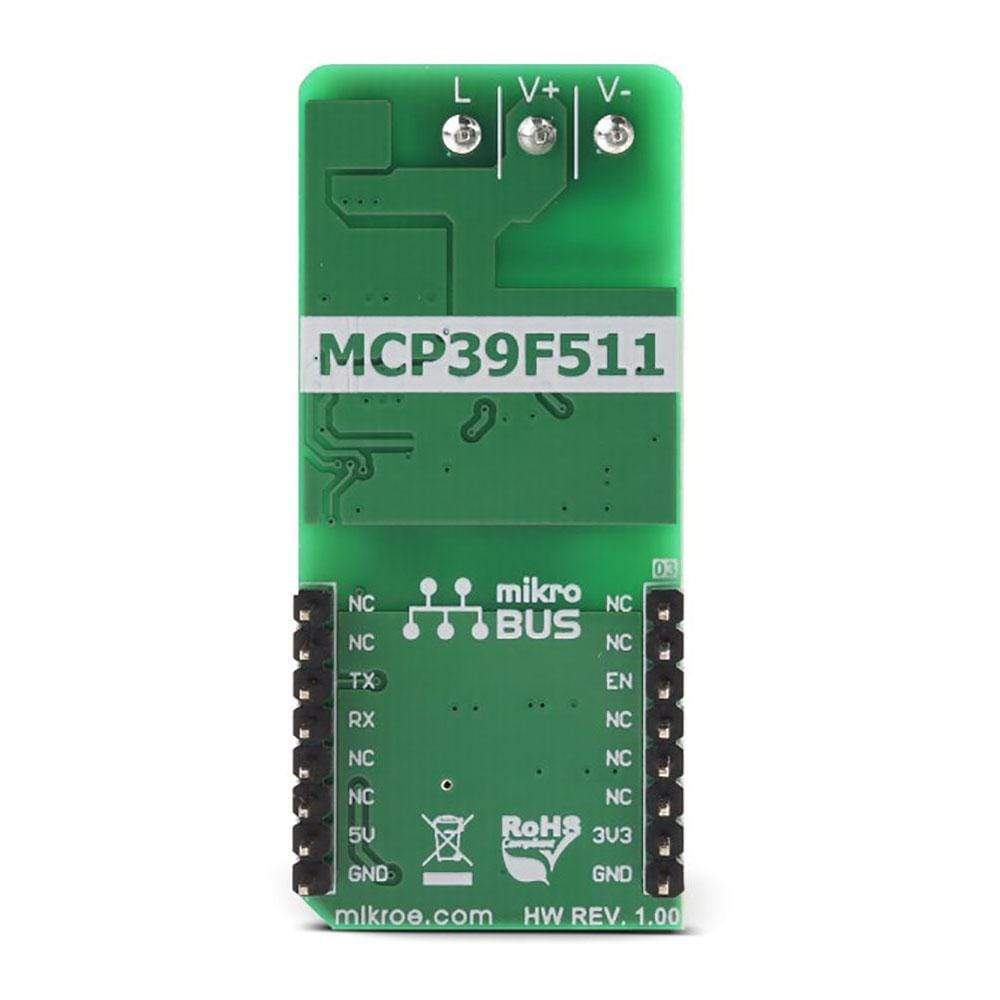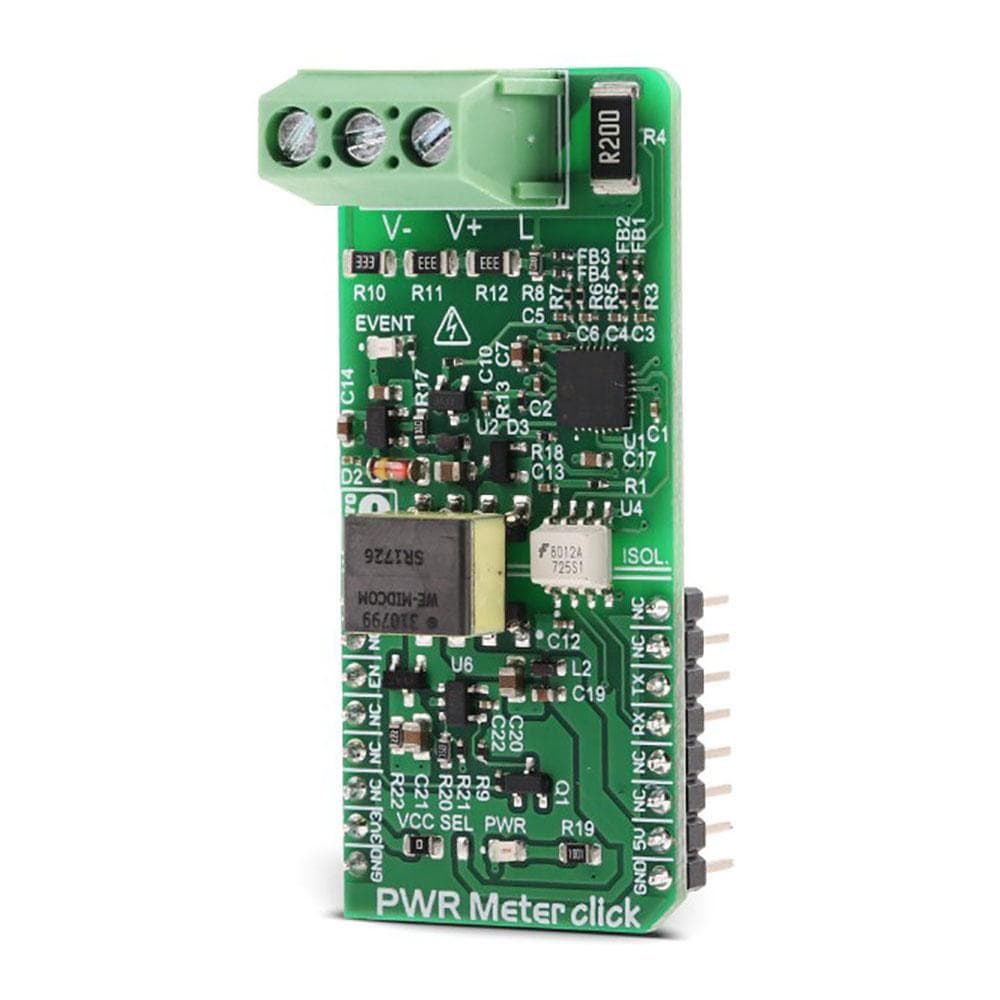
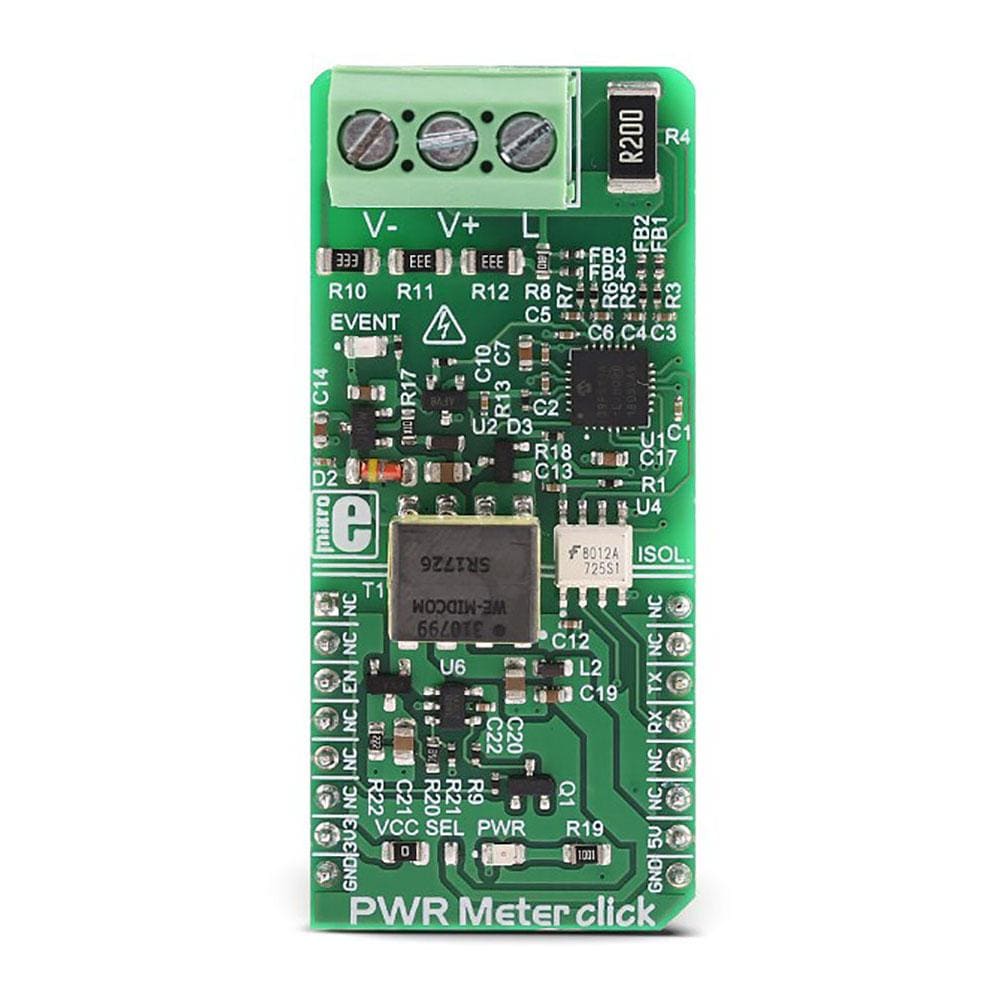
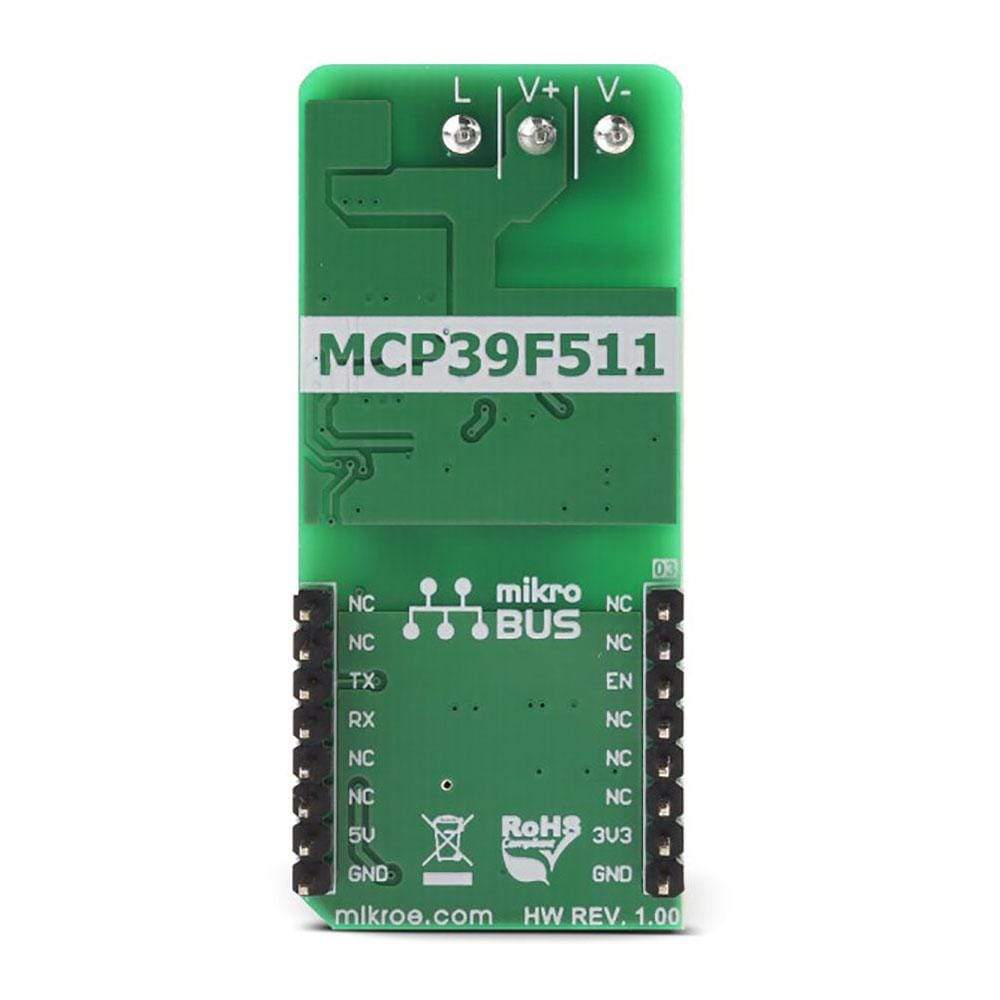
Overview
The PWR Meter Click Board™ is a power measurement Click Board™, capable of measuring voltage and current through the load, connected to either AC or DC power source. The PWR Meter Click Board™ uses the MCP39F511A, a very sophisticated monitoring IC from Microchip, with 16-bit processing core. It is used to calculate all the measurement parameters, returning values of multiple power parameters directly, over the UART interface, reducing the processing load on the host MCU. These parameters include active, reactive, and apparent power, current and voltage RMS, line frequency, and power factor.
NOTE: Do not apply higher voltage than 60V to this board! This click is designed for lower voltage monitoring and evaluation of the MCP39F511A and its basic functionalities.
Downloads
Das PWR Meter Click Board™ ist ein Click Board™ zur Leistungsmessung, das Spannung und Strom durch die Last messen kann, die an eine Wechsel- oder Gleichstromquelle angeschlossen ist. Das PWR Meter Click Board™ verwendet den MCP39F511A, einen sehr hochentwickelten Überwachungs-IC von Microchip mit 16-Bit-Verarbeitungskern. Es wird verwendet, um alle Messparameter zu berechnen und gibt Werte mehrerer Leistungsparameter direkt über die UART-Schnittstelle zurück, wodurch die Verarbeitungslast auf der Host-MCU reduziert wird. Diese Parameter umfassen Wirk-, Blind- und Scheinleistung, Strom und Spannung RMS, Netzfrequenz und Leistungsfaktor.
HINWEIS: Legen Sie keine höhere Spannung als 60 V an diese Platine an! Dieser Click ist für die Überwachung und Auswertung des MCP39F511A und seiner Grundfunktionen bei niedrigerer Spannung konzipiert.
| General Information | |
|---|---|
Part Number (SKU) |
MIKROE-3169
|
Manufacturer |
|
| Physical and Mechanical | |
Weight |
0.026 kg
|
| Other | |
Country of Origin |
|
HS Code Customs Tariff code
|
|
EAN |
8606018713592
|
Warranty |
|
Frequently Asked Questions
Have a Question?
Be the first to ask a question about this.

